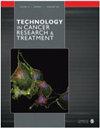The Role of microRNAs in Hepatocellular Cancer: A Narrative Review Focused on Tumor Microenvironment and Drug Resistance
IF 2.7
4区 医学
Q3 ONCOLOGY
引用次数: 0
Abstract
Globally, hepatic cancer ranks fourth in terms of cancer-related mortality and is the sixth most frequent kind of cancer. Around 80% of liver cancers are hepatocellular carcinomas (HCC), which are the leading cause of cancer death. It is well known that HCC may develop resistance to the available chemotherapy treatments very fast. One of the biggest obstacles in providing cancer patients with appropriate care is drug resistance. According to reports, more than 90% of cancer-specific fatalities are caused by treatment resistance. By binding to the 3'-untranslated region of target messenger RNAs (mRNAs), microRNAs (miRNAs), a group of noncoding RNAs which are around 17 to 25 nucleotides long, regulate target gene expression. Moreover, they play role in the control of signaling pathways, cell proliferation, and cell death. As a result, miRNAs play an important role in the microenvironment of HCC by changing immune phenotypes, hypoxic conditions, and acidification, as well as angiogenesis and extracellular matrix components. Moreover, changes in miRNA levels in HCC can effectively resist cancer cells to chemotherapy by affecting various cellular processes such as autophagy, apoptosis, and membrane transporter activity. In the current work, we narratively reviewed the role of miRNAs in HCC, with a special focus on tumor microenvironment and drug resistance.微RNA在肝细胞癌中的作用:以肿瘤微环境和耐药性为重点的叙述性综述
在全球范围内,肝癌在癌症相关死亡率中排名第四,是第六大常见癌症。约 80% 的肝癌是肝细胞癌(HCC),它是癌症死亡的主要原因。众所周知,肝细胞癌可能很快对现有的化疗产生抗药性。抗药性是为癌症患者提供适当治疗的最大障碍之一。据报道,超过 90% 的癌症死亡病例都是由耐药性引起的。微小核糖核酸(miRNA)是一组长度约为 17 至 25 个核苷酸的非编码核糖核酸,通过与目标信使核糖核酸(mRNA)的 3'- 非翻译区结合,调节目标基因的表达。此外,它们还在信号通路、细胞增殖和细胞死亡的控制中发挥作用。因此,miRNA 通过改变免疫表型、缺氧条件和酸化,以及血管生成和细胞外基质成分,在 HCC 的微环境中发挥着重要作用。此外,HCC 中 miRNA 水平的变化可影响自噬、凋亡和膜转运体活性等多种细胞过程,从而有效抵抗化疗。在目前的研究中,我们综述了 miRNA 在 HCC 中的作用,并特别关注肿瘤微环境和耐药性。
本文章由计算机程序翻译,如有差异,请以英文原文为准。
求助全文
约1分钟内获得全文
求助全文
来源期刊
CiteScore
4.40
自引率
0.00%
发文量
202
审稿时长
2 months
期刊介绍:
Technology in Cancer Research & Treatment (TCRT) is a JCR-ranked, broad-spectrum, open access, peer-reviewed publication whose aim is to provide researchers and clinicians with a platform to share and discuss developments in the prevention, diagnosis, treatment, and monitoring of cancer.

 求助内容:
求助内容: 应助结果提醒方式:
应助结果提醒方式:


